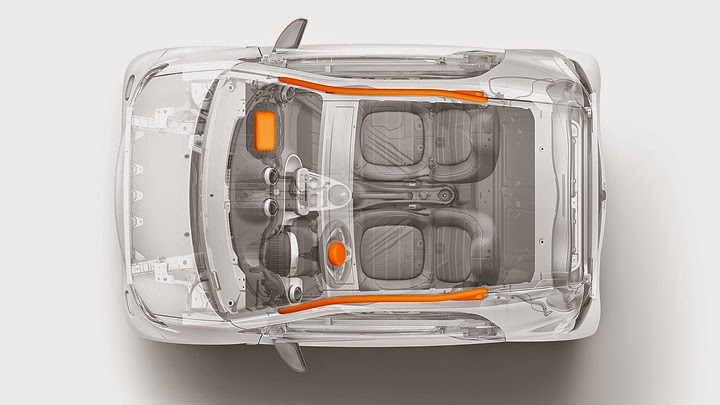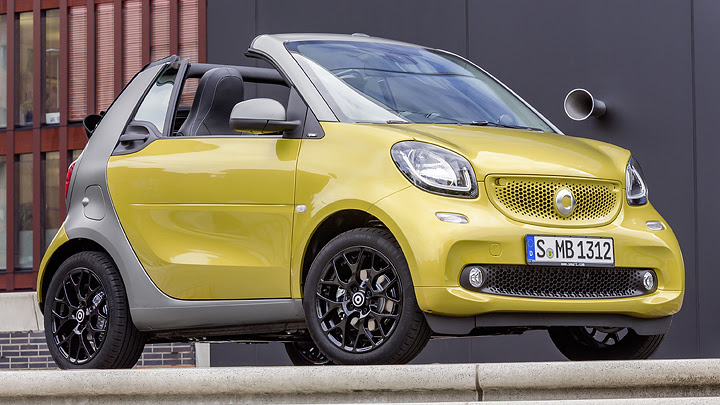
Mercedes-Benz could not have picked a better time to release its innovative concoction. All those speculations about the third millennium spurred some very interesting futuristic vehicles, either for mass production or only conceptual. Some of them were blatant failures, like Fiat Multipla, some ended surprisingly successful, such as Citroën Berlingo, but others stayed “on the fence”. Always in lowercase letters, fortwo was released in 1998 as smart’s very first product, with the very same intention of anticipating what would people drive “in the future”. The subversive styling was there, just like on most contemporary releases, but this one had much more to offer. It was designed exclusively for driving in big cities.
Sure, most first impressions find it ugly, probably fragile and/or “just… weird”. However, the truth is the first is just a subjective opinion. The second has been repeatedly proven wrong by the manufacturer. And the third one is nothing but a bad way to express the acknowledgement of fortwo being different from everything we had seen about cars so far. Besides making it extremely easy to maneuver in crowded streets, being so small contributes to a complete efficiency, rather than just spending less fuel: this is the exact opposite of a luxury vehicle, whose 2,500 kg transport people which, together, weigh less than 10% of that. These are the kinds of arguments which ended making fortwo the most famous city car ever released.










“But opting for one of these surely needs some concessions from you”, you might think. And yes, you are totally right. But it is just as true that smart has been making those each time fewer… and that they are not that many, to be fair. fortwo reaches its third generation taking the opportunity to solve its few flaws as well as carrying over most of what made its original iteration worldwide famous. One of the latter is the reinterpretated design, which manages to look as cool as the first one was thought weird. Head and tail lights were increased, in order to look imponent, while shaping the hood as a separated box helps to take away the image of a four-wheeled egg. And the shapes seem to have just the right balance between round and square contours.
Since urban driving is fortwo’s biggest use, smart gave extra attention to its size. The overall length is still at 2.9 meters, which is combined to the still tiny overhangs to allow the model to make a turning cycle of 6.95 meters. Speaking of circles, you can find more of them by using the triangular door handles: the interior surprises again with its space utilization, delivering more room to its occupants (guess how many) than many compact vehicles which are actually larger and wider. But the dashboard gives a retro touch by repeating most of the circle-shaped elements which appeared at fortwo’s first generation, and not so much at the second. The equipment list includes heated seats, infotainment central and an eight-speaker JBL audio system.










When it comes to safety, fortwo offers the whole package of electronic systems – not only to catch up with its closest competitors, but also because items such as Crosswind Assist are necessary for such a tiny and light car. Besides, both suspension and chassis received some improvements, aiming to more comfortable driving. Other great features include a long list of personalization items, such as having the dashboard covered in fabric, a Sport suspension and choosing a contrasting color for the signature Tridion cell. The new smart fortwo uses the same platform debuted with the all-new Renault Twingo, thanks to a cooperation agreement between these companies. But if these cars do not seem so alike for you, try taking a look at fortwo’s bigger brother.
Another aspect in which smart’s main model received complete changes is the powertrain. Always equipped with start/stop system, three cylinders and five-speed manual transmission, it starts with two engines. The naturally-aspirated 1.0L produces 71 hp and 67 lb-ft, most of them claimed to appear at only 1,000 rpm in order to deliver better driving behavior and fuel economy. The other is a tiny 0.9L unit, which uses a turbocharged to reach 90 hp and 100 lb-ft at 2,500 rpm, and electronically-controlled wastegate to improve both engine dynamics and energy consumption. But if you did not like that transmission, there will also be an optional Twinamic gearbox with six speeds and two clutches. A 60-hp entry-level engine will be released later.








smart fortwo cabrio (31/08/2015)
If ten years ago people were still skeptical about fortwo’s success, the tiny hatchback not only survived, but also managed to become prouder than ever of itself. After reaching its second generation and even resurrecting the forfour variation, now it’s time for it to have its top dropped once again. As the pictures anticipate, the whole conception is pretty much the same, with the removable part being only the roof – you can go all the way, or use it just as a regular sunroof. The former requires only twelve seconds, plus the manual removal of two roof rails (they can be stored in the trunk). While doing that, you may notice that the B-pillars became thinner than the hatchback’s, which aids to a slightly sportier look. Speaking of pillars, the A ones feature hot-formed steel tubes inside, for additional rollover protection.
This and other improvements made the structure 15% stiffer than the outgoing cabrio’s, according to smart. Everything else is shared with the closed-roof version, so you can expect the same excellent maneuvrability (22.8-foot turning circle) and the same efficient powertrain: a three-cylinder 0.9-liter good for 89 hp of power and 100 lb-ft of torque, which are paired to either a five-speed manual transmission or a six-speed, dual-clutch automatic. Trim levels will be Pure, Passion, Prime and Proxy, and the equipment lists should follow what the other smarts bring. cabrio’s customizing options, in turn, will be more numerous: there are separate color choices for the body, the Tridion safety cage, and the roof. This vehicle should go on sale soon, starting with European and North-American markets.